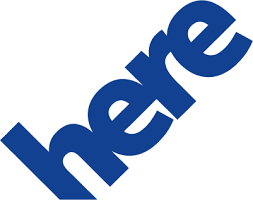 Although official announcements are not out, it sounds like the German Auto alliance formed between BMW, Daimler and Audi have won the bidding to Nokia’s HERE business. The reported price is €2.5B ($2.7B). Despite an active rumor mill, it’s not clear how spirited the bidding was or whether the German consortium ever had much competition other than from private equity companies.
Although official announcements are not out, it sounds like the German Auto alliance formed between BMW, Daimler and Audi have won the bidding to Nokia’s HERE business. The reported price is €2.5B ($2.7B). Despite an active rumor mill, it’s not clear how spirited the bidding was or whether the German consortium ever had much competition other than from private equity companies.
There’s lots still to be learned about the deal but here are few things that I will be watching for:
- What does “Open” mean?: A source in the WSJ was quoted as saying “The goal has always been to run the service as an open platform for everyone.” Open can mean many things. There is some indication that the service will be “open” to other users…meaning other car companies can put information in and presumably buy services. In HD auto maps, the more data, the better the real time accuracy. There may also be an open standard for the probe data brought into the car. HERE has already promoted that and it fits the same need as above. Will they say “Hey World, we’ve just spent $2.7B for this data and now we’re opening it up to you for free!”? Not likely.
- How much of the digital map market will they address? Much has been made of the need of the German consortiums need to own “HD Maps”; that is the maps that will be needed for self-driving and autonomous cars. But HD Maps are pretty different animals from the maps that are needed for a mobile local search. Grossly simplifying, you can divide digital map use into three broad use cases:
- Local Search Maps: Street geometries along with accurate POIs and addresses for good geocoding. This is used for local search.
- “Basic” navigation and routing: The attributes needed to get a route from Point A to Point B. It adds in a lot more detail about road classifications, speed limits, turn restrictions, grade separations, etc. Still, it’s good enough to know “Turn left on Woodland Way”. You don’t need to know which lane you’re in. These are also largely static. They assume a driver is present and over-riding any instructions that don’t make sense in the real world.
- HD Navigation: High precision, real time maps that are more focused on autonomous vehicles. These are not just more accurate versions of the basic navigation map. They require much higher precision and greater linkages with on-board sensors and high speed feedback loops to react to real time conditions. They take different technologies to capture data, new toolchains to process it and new systems to implement it in an autonomous vehicle. These get a lot of press. Revenues are…well, lagging.
As these maps have different characteristics, they also have different revenue models, market timing and required investments. While HERE had a mission to serve all these use cases (admittedly with a more recent emphasis on the first two), it’s not clear that the automotive consortium will have an interest in supporting the local search model. That’s the model that most of us use 90+ percent of the time when we use digital maps outside our car.
- Who will support non-automotive users? HERE had done a nice job of building wins in the mobile/Internet market, counting Microsoft, Yahoo!, Amazon, Baidu, Facebook and others as customers of its map data and services. Those guys use HERE’s maps to compete with the giant in the local search market: Google. And Apple. If HERE goes all-auto, all the time, these guys have a problem. TomTom offers data but has lagged on mapping services. I don’t see any stopping open data maps from taking over the Local Search use case and soon the “Basic” navigation use case. The case is just too compelling and the gap closes daily. There’s a huge opportunity here for OpenStreetMap. And companies that provide mapping services based on OSM.
- Will they drop the HERE name? Please.
Looking forward to these questions getting answered in the days ahead.
